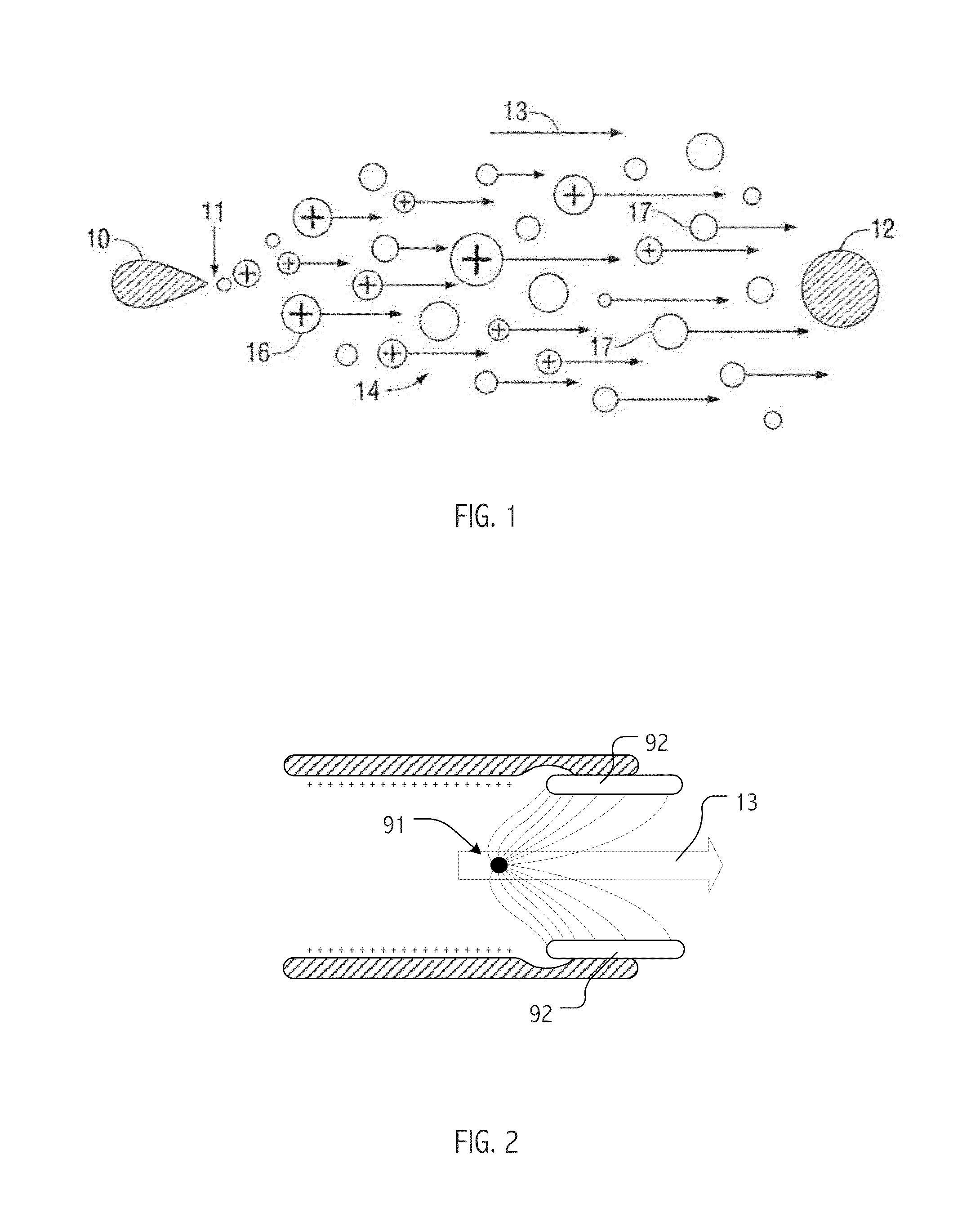Electrohydrodynamic (EHD) air mover configuration with flow path expansion and/or spreading for improved ozone catalysis
a technology of electrohydrodynamic and air mover, which is applied in the field of electrohydrodynamic air mover, can solve the problems of mechanical air mover being incompatible with, or unacceptably limit, the design, scale or form factor of a particular design, and reducing so as to improve the efficiency of air movement. , the effect of enhancing heat exchang
- Summary
- Abstract
- Description
- Claims
- Application Information
AI Technical Summary
Benefits of technology
Problems solved by technology
Method used
Image
Examples
Embodiment Construction
)
[0037]As will be appreciated, many of the designs and techniques described herein have particular applicability to the thermal management challenges of densely-packed devices and small form-factors typical of modern consumer electronics. Indeed, some of the EHD fluid / air mover designs and techniques described herein facilitate active thermal management in electronics whose thinness or industrial design precludes or limits the viability of mechanical air movers such as fans, blowers, etc. In some embodiments, such EHD fluid / air movers may be fully integrated in an operational system such as a pad-type or laptop computer, a projector or video display device, a set-top box, etc. In other embodiments, such EHD fluid / air movers may take the form of subassemblies or enclosures adapted for use in providing such systems with EHD motivated flows.
[0038]In general, a variety of scales, geometries and other design variations are envisioned for emitter and / or collector electrodes (as well as ot...
PUM
| Property | Measurement | Unit |
|---|---|---|
| diameter | aaaaa | aaaaa |
| length:height | aaaaa | aaaaa |
| transit time | aaaaa | aaaaa |
Abstract
Description
Claims
Application Information
 Login to View More
Login to View More - R&D
- Intellectual Property
- Life Sciences
- Materials
- Tech Scout
- Unparalleled Data Quality
- Higher Quality Content
- 60% Fewer Hallucinations
Browse by: Latest US Patents, China's latest patents, Technical Efficacy Thesaurus, Application Domain, Technology Topic, Popular Technical Reports.
© 2025 PatSnap. All rights reserved.Legal|Privacy policy|Modern Slavery Act Transparency Statement|Sitemap|About US| Contact US: help@patsnap.com



